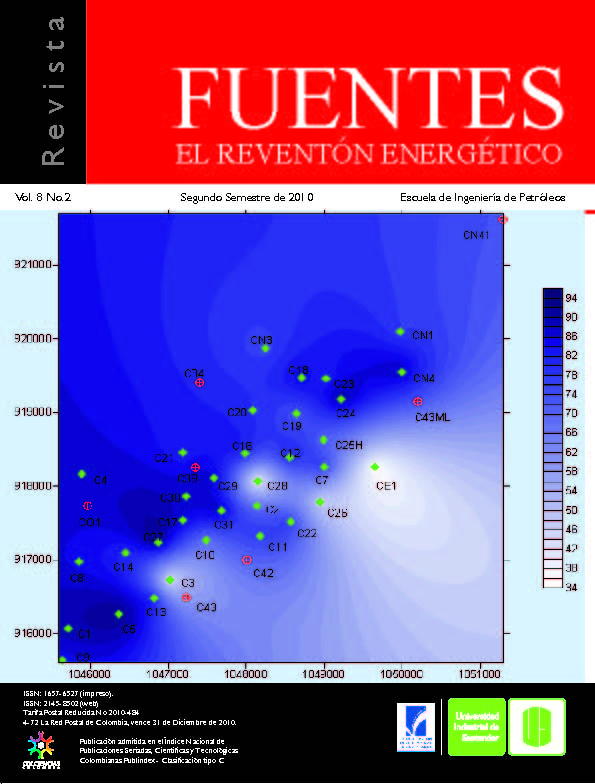Publicado 2010-12-14
Cómo citar
Resumen
RESUMEN
En este trabajo se identificaron las zonas de alta corrosividad de un campo petrolero de crudo pesado, y se predijeron las velocidades de corrosión que presentarían siete pozos prospecto para advertir de los posibles riesgos de daño por corrosión que sufrirían después de su perforación y de esta manera seleccionar, anticipadamente, los materiales más adecuados a las condiciones particulares de agresividad de cada pozo. La metodología consistió primero en revisar los históricos de los pozos productores e identificar los agentes corrosivos más significativos en treinta y tres pozos del campo, los cuales fueron comparados con los rangos de concentraciones establecidos en norma NACE MR0176-2000 y con los históricos de falla, lo que mostró como resultado al CO2 como agente corrosivo predominante. Posteriormente con la ayuda del programa Surfer 8 se estimó el porcentaje de CO2 en los prospectos de pozo y sus respectivos cortes de agua, con estos y otros datos se calcularon las velocidades de corrosión de los siete prospectos de pozo con las ecuaciones desarrolladas para estos cálculos.
Palabras Claves: Mapa de Corrosividad, Crudo Pesado, Pozos, Producción.
ABSTRACT
In this work the areas of high corrosivity of the oil field were identified, and especially, the corrosion rates of seven prospect wells were predicted to warn of the possible risks of damage for corrosion that they would suffer after their perforation, and thus to select beforehand, the materials to use in that wells according to its aggressiveness. The methodology that was carried out, first of all to identify the more significant corrosive agents in the field, taking the concentrations of corrosive agents in 33 producing wells of the field, comparing them with the ranges established in the standard NACE MR0176-2000 and with the historical failures of the oil field, it showing to the CO2 like main corrosive agent. Then, with the help of the program surfer 8 was estimate the percentage of CO2 and their respective water cut, with these and other data the corrosion rates of seven prospect wells were calculated with the developed equations for these calculations.
Keywords: Corrosivity Map, Heavy Crude Oil, Wells, Production.
